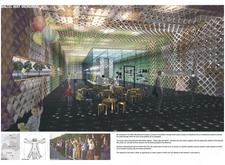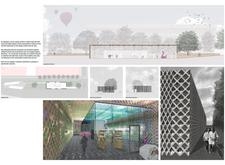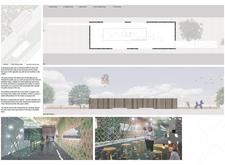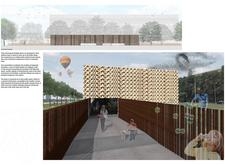5 key facts about this project
### Overview
The Baltic Way Memorial is situated to commemorate the historic human chain formed by the Baltic States—Estonia, Latvia, and Lithuania—on August 23, 1989. The design aims to encapsulate the collective memory and unity of the nations, creating a space that embodies resilience and cultural significance while fulfilling practical functions. The architectural approach emphasizes the themes of connection and communal solidarity, reflecting the importance of human experiences in its form.
### Spatial Organization
The spatial arrangement of the memorial encourages user interaction and engagement. Key areas include a café and souvenir space designed to invite visitors for moments of rest and reflection while fostering social interaction. The glass-enclosed café connects patrons visually and physically to the surrounding environment. Additionally, the exhibition space is dedicated to cultural and educational activities, serving as a platform for sharing narratives related to the memorial and promoting community involvement.
### Materiality and Environmental Impact
The material selection for the memorial enhances both functional performance and aesthetic appeal. Key materials include wooden panels arranged in a lattice formation, symbolizing the intertwined destinies of the Baltic nations, and transparent glass elements that ensure openness and natural light throughout the interior spaces. Reinforced concrete underpins the structure's durability, while steel components provide rigidity and safety. The incorporation of vibrant color treatments mirrors the flags of the Baltic States, contributing to the memorial's lively atmosphere. Furthermore, the project demonstrates an environmental consciousness through the use of local materials to minimize transport emissions, the integration of green spaces to support biodiversity, and an orientation that maximizes natural light, reducing reliance on artificial illumination.






















































